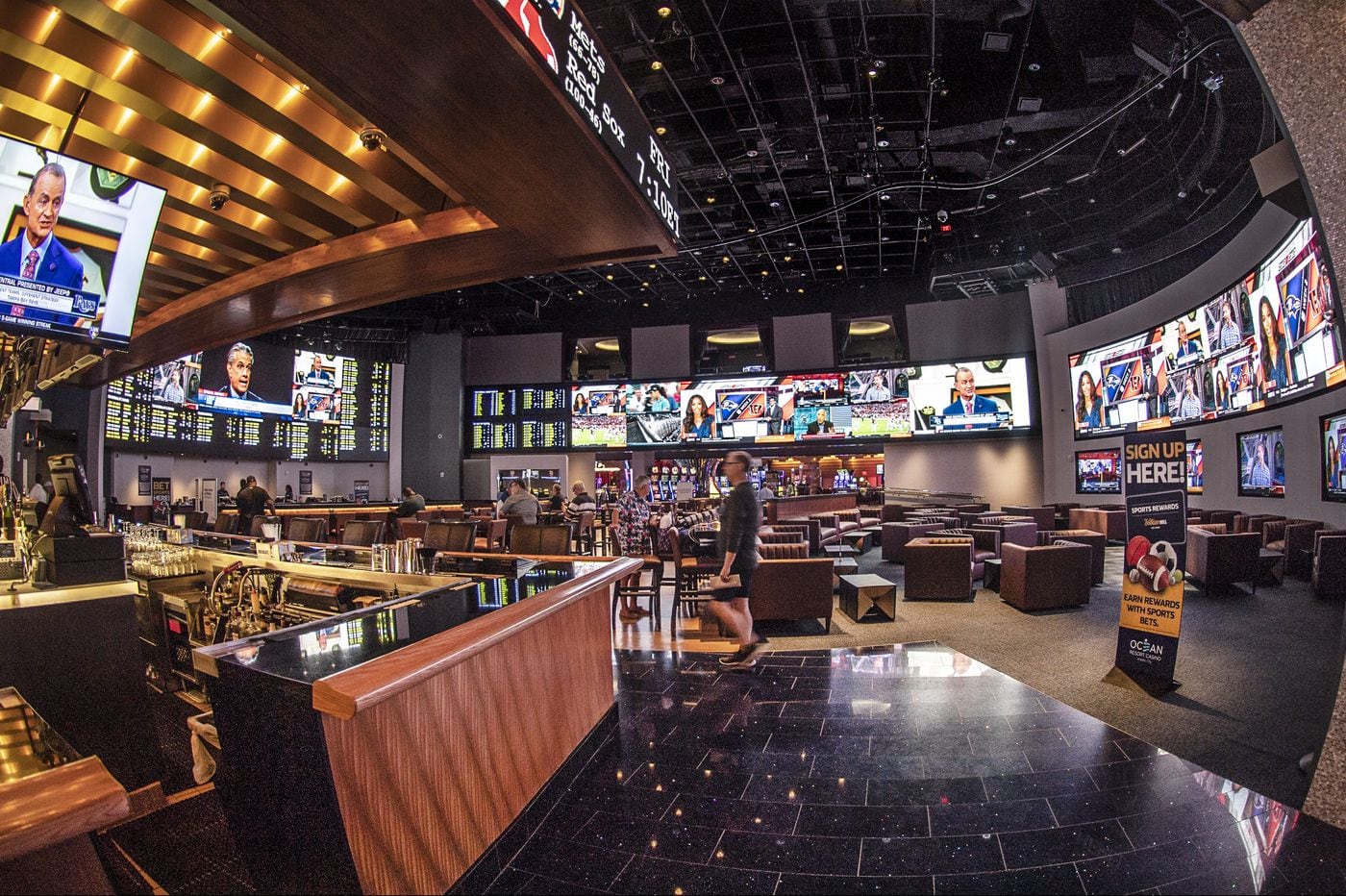How Sportsbooks Make Money
The betting apps and online sportsbooks highlighted here exceed our expectations for each of the criteria outlined above. We have used our own money to bet with every single one of them, and supplemented this firsthand experience by publishing our analytic research to identify industry standards on everything from odds movement to the amount of. Make your first live bet of at least $10, with minimum odds of -200 on any live market. And get a $10 Free Bet to use on any sport! $500 in Free Bets. If your first bet loses, you will get your money back up to $500 in free bets! Win 70% more on Tennis Parlays. Place a 2+ leg parlay and get a bonus of 5% to 70% added to your. We’ll look at how sportsbooks make lines for games, study how they might shade lines to increase profit margins, and see how public “betting percentages” can help identify value. In future articles within this series, we’ll take a closer look at why “smart money.
Most state and federal governments are slow to warm up to various types of gambling. The United States exemplifies this tendency better than almost any other country.
However, American politicians have made an exception for sports betting. Fueled by the promise of billions of dollars in revenue, over a dozen states quickly legalized sports gambling after the fall of PASPA—a former federal ban on the activity.

What these same politicians don’t understand, though, is that the billion-dollar projections are based on sports betting “handle” and not revenue.
What are they missing? I’m going to discuss the differences between sports betting handle and revenue and how these terms impact you.
What Is Sports Betting Handle?
Handle refers to the total betting volume that online sportsbooks receive on a particular matchup, sport, or in general. This term describes a variety of scenarios involving the financial details of sportsbooks.
For example, a bookmaker may want to know its handle for NBA games in the month of March. Or, a legislature could inquire about the total handle of all in-state bookmakers in a given year.
Here’s a more-detailed example:
- FanDuel’s parent company, Flutter Entertainment, wants to know their total handle in New Jersey.
- FanDuel accepted $250 million in overall wagers throughout the year.
- Therefore, FanDuel’s New Jersey handle for the year is $250 million.
Simply put, handle doesn’t refer to how much sportsbooks earn in revenue. It merely indicates how much total betting action they accept/handle.
What Is Sports Gambling Revenue?
Operators don’t open land-based and online sportsbooks just to help you and other gamblers connect. They expect to make profits like any other business.
Here’s an example using a point spread:
- New York Jets +6.5 (-110)
- Miami Dolphins -6.5 (-110)
- Both sides are wagering $11 for every $10 they stand to win.
- Only the losing side, though, actually pays the $11.
- The losers, and only losers, must cover 10% juice in this instance.
The sportsbook collects $1 in juice for every $22 in handle. They earn approximately 4.5% (1/22) out of every dollar wagered.
This 4.5% represents their margin on the bet. Margin is often used interchangeably with juice.
However, it’s slightly different than the latter. A margin indicates the bookmaker’s profit on the overall betting action.
Thus, it directly correlates with the sportsbook’s revenue. Meanwhile, juice only represents what the losing side pays.
Why Do People Get Revenue and Handle Confused?
Most politicians, media personalities, and the general public don’t understand sports gambling very well. Many of the same people are confounded by how the odds work (such as in the previous example).
I don’t blame these people for not understanding sports wagering. After all, -110 odds, juice, and point spreads aren’t part of school lessons.
In any case, this lack of understanding leads to misconceptions. One of the most-common misconceptions is that handle and revenue are the same thing.
As I’ve explained, they’re definitely not! Handle includes all wagers that sportsbooks accept for a certain game, sport, time period, etc.
Revenue represents the profit margin that bookmakers have on each bet (generally 5%). Sportsbook profits and the government’s cut come directly from this margin (when losing side pays vigorish).
You can easily see the differences between revenue and handle after spending just five minutes on the subject. Nevertheless, many people are still befuddled by the terms.
Sportsbooks & Governments Care Deeply About These Concepts
Obviously, bookmaking operators put lots of thought into their handle, margin, and juice. They need these numbers to reflect their financial performance.
Sometimes, though, bookmakers must look at the concepts separately. They might have a relatively high handle, for instance, yet be earning less than a 4% margin (approx. 8% juice).
In this case, they’d need to figure out how to boost their juice without turning off customers. Parlays and teasers—both of which feature high vigorish—help them accomplish this goal.
Governments also care quite a bit about this matter too. Those who understand the difference between handle and juice can form a complete picture on how much tax receive they’ll receive.
Here’s an example:

- Nevada sportsbooks handled $6.6 billion worth of bets from June 2018 to Sept. 2019.
- They made $407.55 million in revenue during this period.
- Nevada charges bookmakers a 6.75% tax rate.
- They paid $27.51 million in taxes.
Lawmakers who mistake handle and revenue will be severely disappointed with the tax results. Those in Nevada, for example, would think that they’re due $445.5 million (6.6 billion x 0.0675) under this false assumption. That said, it’s important for politicians to note the differences when they’re making policies.
Do Sports Betting Revenue and Handle Affect You?
Both handle and bookmakers’ juice impact you as a sports gambler. As for handle, you want to know what kind of betting volume an operator is seeing.
High volume leads to more liquidity, which, in turn, leads to larger wagering limits. Sportsbooks are willing to allow bigger bets when they receive more volume.
This is why NBA and NFL betting limits are larger than handball and curling limits. If you bet big, then you’ll want to choose bookmakers and/or sports with a higher handle.
How Sportsbooks Make Money
Furthermore, you have a stronger chance of winning long-term profits with lower vigorish. Therefore, you should shop around at different sportsbooks to find the best deals for particular games/sports.
How Do You Figure Out the Juice You’re Paying?
You can easily determine what vigorish you’re dealing with when commonly betting at the same odds. For example, many point spreads attach -110 odds to each side (10% juice for losing side / 4.5% margin overall).

You’ll have a more difficult time, though, when wagering on point spreads and moneylines when odds are more uneven. Luckily, you can use a sports betting margins calculator to figure out what kind of vigorish the bookmaker is taking.
Here’s an example:
- Chicago Bulls +155
- Indiana Pacers -190
- You enter these odds into a margins calculator.
- This particular wager holds a 4.75% margin for the bookmaker.
Such tools let you figure how much vigorish you’ll pay in any given situation. You should get into the habit of running odds from prospective wagers into these calculators whenever possible.
What’s Acceptable Juice?

Generally speaking, you only want to face between a 4% and 5% margin on a given bet. Anything higher than this puts you in a tough spot as far as long-term prospects go.
Remember, the losing side pays 10% vigorish with -110 odds. This scenario works out to around a 4.5% margin overall for sportsbooks.
Many operators, however, make closer to a 5% margin off the total handle. They do so by taking more juice and featuring higher margins on parlays—especially when such bets involved 3+ teams.
Parlays are attractive, because they offer large potential payouts for a small bet. For example, you could win 720x your initial stake on a wager involving 10 teams.
However, parlays are often considered “sucker bets.” They give the house over a 30% margin. Simply put, you’ll lose $3 out of every $10 you wager on parlays.
Most other types of bets, though, hang around the 5% margin (approx. 10% juice) area. You should focus on point spreads, moneylines, totals, and/or live wagers to get the best deals.
Reduced Vig Sportsbooks & What You Should Watch Out For
Some bookmakers advertise themselves as “reduced vig” or “reduced juice” sportsbooks. These terms refer to operators that take less juice than their competitors on average.
Here’s an example:
- The average bookmaker takes 10% juice (-110 odds) from the losing side of points spreads.
- This leads to a 4.54% margin.
- A reduced vig operator only takes 8% juice (-108 odds) from the losing side.
- This leads to a 3.84% margin.
How To Sportsbooks Make Money
You might rush to open an account at the first reduced juice operator you see. However, they make up for the lack of vig they take in other ways.
Most notably, bonus offers are weaker, or even nonexistent, at reduced vig sportsbooks. Sometimes, these bookmakers don’t offer any better deal when considering that they feature lame bonuses.
Conclusion
Failing to understand the difference between handle and revenue can lead to some wild assumptions. Politicians from a smaller state like Iowa, for example, may think that their market is set to make billions.
Of course, sportsbooks don’t collect every bet they take as profit. Instead, they merely handle wagers placed on all sides of an event.
They earn their profits by receiving juice from the losing side. Their overall take on a bet is their margin (e.g. 5%, or $50, on $1,000 worth of bets).
How Much Money Did Sportsbooks Make
Once you thoroughly understand handle, revenue (margin), and juice, you can look for the best opportunities at sportsbooks.